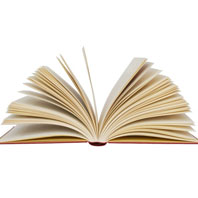
Northwest history


Missions and disasters
Here’s a look at two collections at Washington State University Libraries. Housed at the Manuscripts, Archives, and Special Collections (MASC), they are just a couple of the many treasures at WSU Pullman.
On a mission
Elkanah and Mary Richardson Walker established a mission in 1839 at present-day Ford, Washington, closing it a decade later following the Whitman killings in Walla Walla. When she died in 1897, Mary was the last of the 13 original members of the Old Oregon Mission. One of the books in the collection still has a portion of her homemade deerskin book cover attached. Two books in the collection are … » More …

Briefly noted

Saving the Oregon Trail: Ezra Meeker’s Last Grand Quest

Briefly noted

Salmon Eaters to Sagebrushers: Washington’s Lost Literary Legacy

“It was raining ash”
The angry-looking ash cloud billowing above Mount St. Helens is one of the most iconic images in state history.
And it is etched in our collective memory.
Those living in the state of Washington at the time of the May 18, 1980, eruption all have a where-were-you-when-it-blew moment. Here are some of them.
Don Swanson
Volcanologist Don Swanson (’60 Geology) agreed to man the mountain’s forward observation post for a few days to replace a geologist who needed to travel out of town. But Swanson himself needed a replacement for a night—that night.
David A. Johnston, a younger U.S. Geological Survey colleague, agreed … » More …

Out West
We make so many assumptions about gender expression and identity, and sexual orientation, that it’s sometimes a shock to realize that ideas about them have changed over time. Take pink and blue.
Pink is for girls, blue is for boys—except when it wasn’t. A Ladies’ Home Journal article from 1918 clearly states that “the generally accepted rule is pink for the boys, and blue for the girls. The reason is that pink, being a more decided and stronger color, is more suitable for the boy, while blue, which is more delicate and dainty, is prettier for the girl.”
A decade later, Time magazine repeated the … » More …

Gallery: The Northwest in the National Park Service Centennial collection
A sampling of Northwest locations in the National Park Service Centennial Photo Gallery.
Explore additional NPS centennial photo gallery images across the United States.
Read about “Preserving the story of America.”

Gallery: Gustav Sohon and the Mullan Road
Gustav Sohon (1825–1903) was an artist, interpreter, and topographical assistant. Sohon executed some of the earliest landscape paintings of the Pacific Northwest. One of his first assignments was with Lieutenant John Mullan, who was surveying the country between the Rocky and Bitterroot Mountains for the Pacific Railroad Surveys led by Isaac Stevens.
Read about Mullan in our feature “Lost Highway.”
